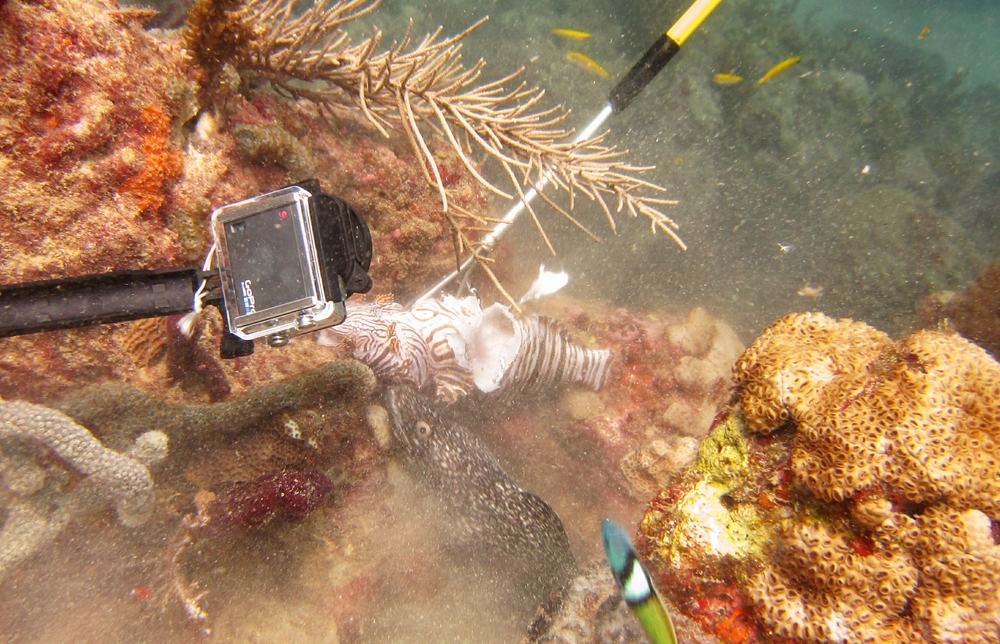This site looks much better with JavaScript turned on. For the best experience, please enable JavaScript and refresh the page.
Dealing with Lionfish
Lionfish in the Caribbean tend to be large, colourful and beautiful. There's a reason they grow so large - they are not a native Caribbean species, and they have no natural predators here. They are voracious predators, hoovering up all the other reef fish, and growing to an enormous size compared to their homeland in the Indo-Pacific. Because of the damage they do to the local reef life, they are considered a pest, and the dive leaders try to keep their numbers down by spearing them. It helps that they are good to eat, so they don't go to waste.
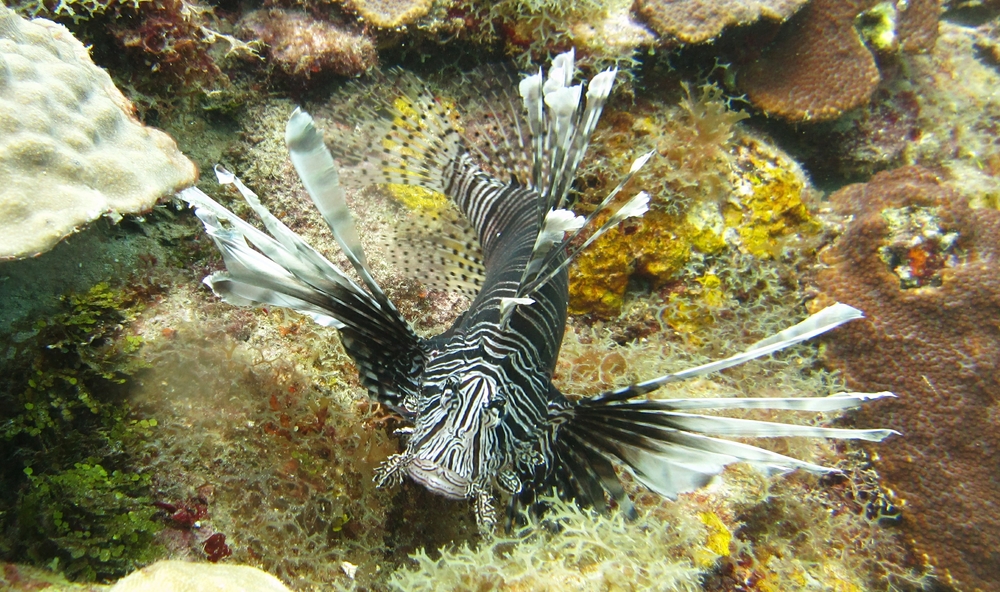
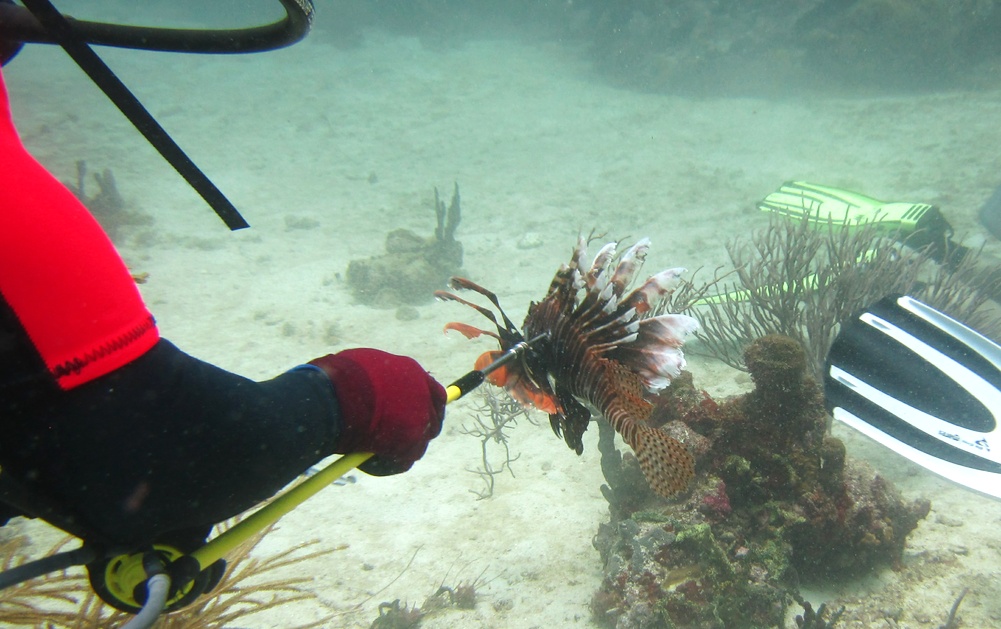
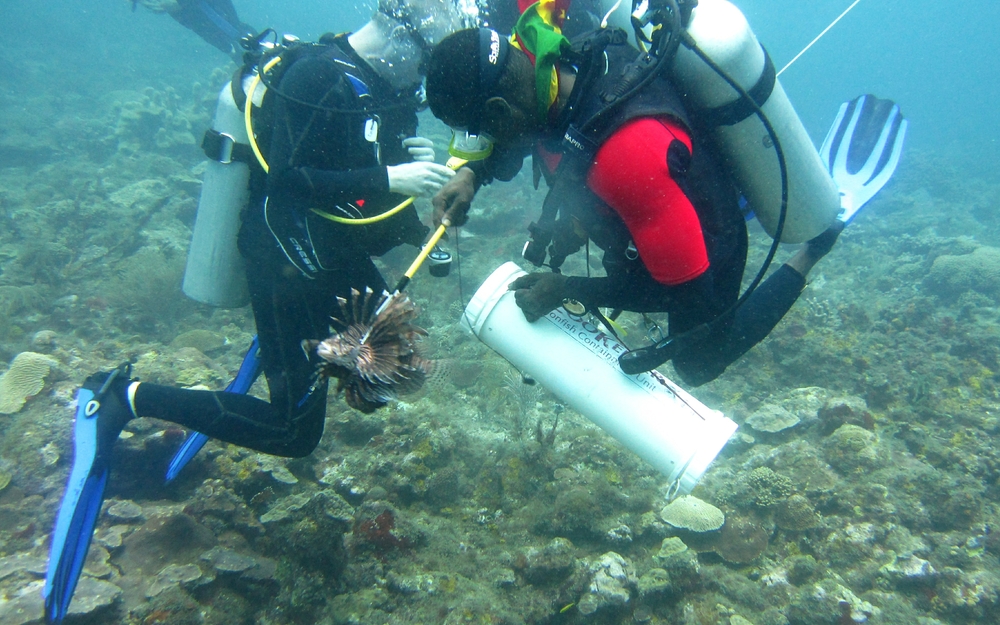
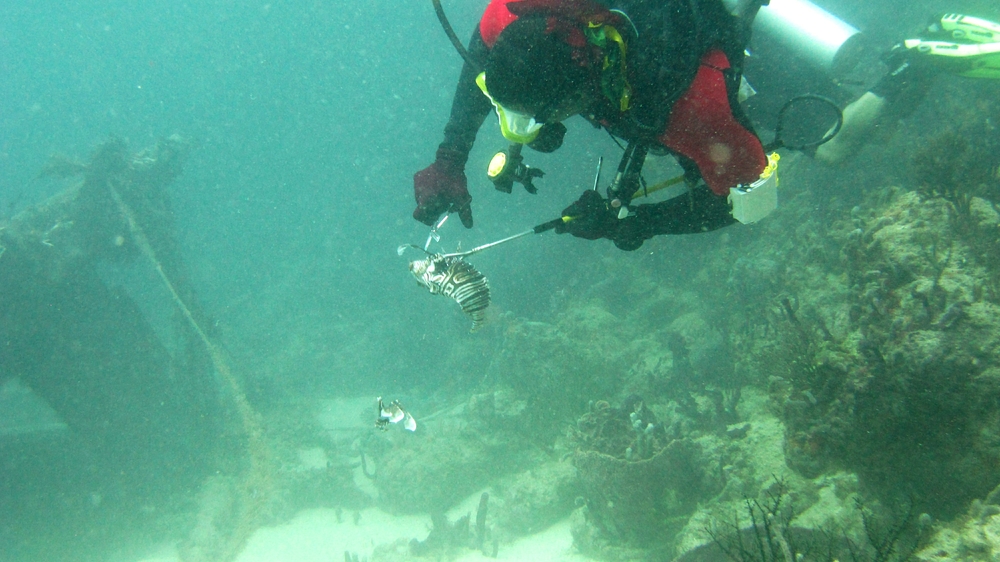
Meanwhile, Mark ensures his GoPro gets a close-up view of the action.
